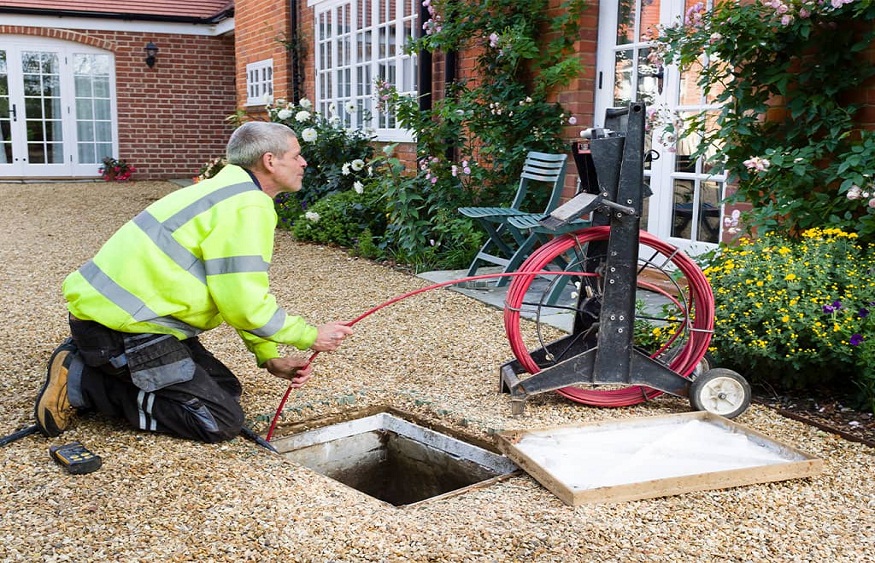Every day, drain systems quietly remove water and garbage from our homes and towns. They are the hidden heroes of our communities. However, what happens if there are issues with these covert networks? Here’s a modern option that’s completely changing the way maintain and inspect our drainage systems: cctv drain surveying . In an effort to raise awareness of this intriguing technology and its significance for maintaining the smooth operation of our pipes, this article will examine five major facets of CCTV drain surveying.
1. The Basics of CCTV Drain Surveying
Without the need for excavation or noisy digging, this approach enables professionals to see within pipelines. A flexible rod and a tiny, waterproof camera are inserted into the drain as part of the procedure. A display above ground receives real-time video footage captured by the camera as it travels down the pipe, giving a clear picture of the pipe’s state.
The ease of use and efficiency of CCTV drain surveying are its greatest features. In contrast to conventional techniques that depended on conjecture or thorough investigation, this technology provides an objective perspective of the issue. With precise accuracy, technicians may locate problems like clogs, cracks, tree root invasions, or collapsed sections of pipe accuracy. This precise diagnosis allows for more targeted and efficient repairs, saving time, money, and unnecessary disruption to property.
However, people do not use CCTV drain surveys only during emergency situations. They are very important in the healthy maintenance of property, where property owners can be early advised on with possible problems before they culminate into serious complications. Such surveys can save considerable costs and prevent frequent emergencies by helping to maintain and improve drainage systems so they continue to operate effectively for several years. CCTV surveys are a tool for conveying information to owners of property, as to the state of a drain, which help them to make pertinent decisions about maintenance or repair works, respectively.
2. The Technology Behind the Cameras
The CCTV drain surveying cameras are technological marvels of the present era. These gadgets are made especially to survive the severe conditions that can be encountered inside drainage pipes. They can function in total darkness, are waterproof, and are designed to fit through small openings and around pipes bends. Even in the darkest circumstances, the cameras’ strong LED lights illuminate the inside of the pipe, guaranteeing good visibility.
Since the majority of CCTV drain survey cameras can rotate 360 degrees, experts can inspect every inch of the pipe’s perimeter. Additionally, they have the ability to tilt up and down, giving a thorough view of all joints, connections, and potential flaws. The cameras send out high-definition, frequently color, pictures and films.
The technology doesn’t stop at the camera itself. The control units that operators use above ground are equally sophisticated. These units often include features like GPS tracking, which allows the exact location of any issues to be pinpointed. This information can be overlaid onto site maps, making it easy to locate problem areas for future reference or repairs. Many systems also include software that can generate detailed reports, complete with images, videos, and recommendations for remedial action. This comprehensive documentation is invaluable for planning maintenance strategies and keeping accurate records of a property’s drainage system.
3. The Process of Conducting a CCTV Drain Survey
A CCTV drain survey is a rigorous procedure that calls for expertise, endurance, and close attention to detail. Usually, a thorough cleansing of the drain is the first step. This guarantees that the camera may move freely through the pipe and gets an unobstructed view. For this, high-pressure water jetting is frequently employed to clear away debris and accumulated residue that could obstruct the camera’s view or hinder its progress.
The survey can actually begin immediately after cleaning the drain. In situations that involve access points to the drain, the technician carefully feeds the camera through a toilet or sink outlet or an inspection chamber or manhole as the case maybe. During the survey the technician is likely to take note of the observations made, sometimes even noting physical points of the difficulties faced.
They may also capture a photograph or record live videos of any part of the journey that seems to be interesting or significant. Amount of time taken for a survey is likely to differ depending on issues like the size and nature of the drainage system to be assessed. A basic survey of a small domestic property might be accomplished in one or two hours at the most, while a vast commercial or industrial property would take days to fathom. Technician who has conducted survey will make a summary report of the results of the survey, recommendations of any work that needs to be done.
4. Common Issues Detected Through CCTV Drain Surveys
CCTV drain surveys are a very useful tool for determining a variety of problems that may arise with drainage systems. Blockages are among the most often found issues. These can be brought on by a number of things, including as fatty deposits that have developed, debris that has gathered, or even foreign objects that have entered the pipes.
The camera’s ability to clearly depict the type and amount of the obstruction enables the taking of the necessary action. High-pressure water jetting can sometimes be used to quickly clear minor blockages, but more serious obstructions can call for more involved intervention.
5. The Benefits and Limitations of CCTV Drain Surveying
One of its biggest benefits might be that it’s non-invasive. In contrast to techniques that necessitate excavation, CCTV surveys can be carried out with little disturbance to the land. This avoids needless damage to buildings, roadways, and landscaping in addition to saving time and money. Another significant advantage of CCTV surveys is their accuracy. These surveys take the guesswork out of problem identification by giving a clear, visual picture of the inside of the pipe.
Another key benefit of CCTV surveys is their comprehensiveness. These audits may swiftly and effectively cover extensive piping areas, giving a comprehensive view of the drainage system’s condition. For those purchasing real estate, this is especially helpful since a CCTV survey might form part of a proactive maintenance strategy, helping to prevent small issues from developing into major problems.
Conclusion
The way you examine and manage our drainage systems has been completely transformed by cctv drain surveying in dubai. This technology makes it possible to see within pipes clearly and non-invasively, which facilitates more precise problem identification and focused repairs. CCTV audits provide essential insights into the condition of our drainage networks, from the sophisticated cameras that navigate our pipes to the prevalent concerns they identify.

